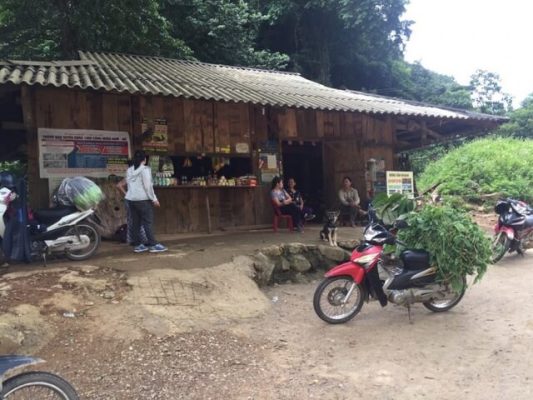The Me Pia Pass looks like a giant python winding, forming 14 steep floors with sharp bends. And this place is known as one of the most dangerous passes of Cao Bang. The Me Pia pass has many challenges, but it is a favorite destination for believers who love to travel and explore great nature. Let’s explore the Ma Pia pass with Vietnam Reviewer and pocket experiences if you are planning to travel here!
From start to finish, the Me Pia Pass winds like a long snake, forming 14 winding, winding, and spectacular floors for those who like to “move”. If you plan to conquer one of these 10 most dangerous passes in Vietnam, learn some valuable information about the Me Pia pass first.
Table of Contents
General information about Me Pia Pass
Me Pia Pass is one of the most famous passes in Cao Bang province, the Northwest region of Vietnam. Accordingly, the Me Pia pass located on National Highway 4A has a total length of only 2.5km, but because of the slope, it is formed into a winding road like a silk strip in the wind. The entire pass is located in Xuan Truong commune, connecting this commune with the center of Bao Lac, a district bordering China.
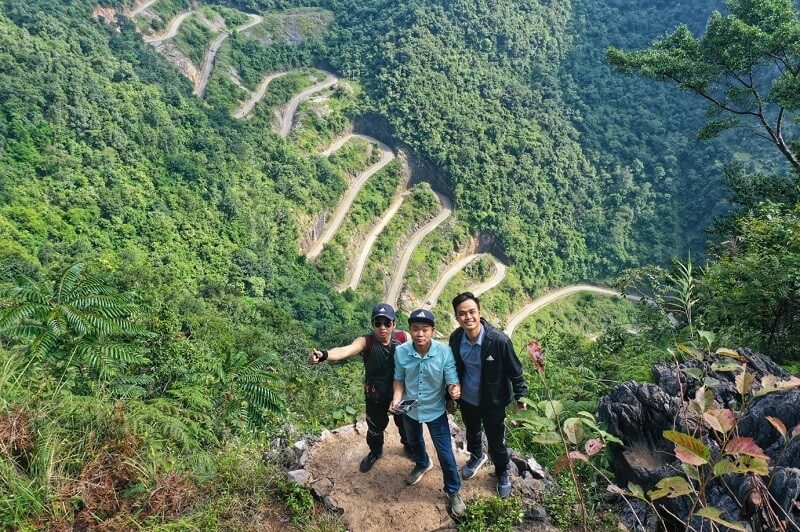
Many people who do not remember the exact name of Me Pia often call it a steep 14-story pass because of its inherent shape. Built to connect a commune and a district center, a mountain slope away from this place, Me Pia pass must be made into a curve to make the steep 2.5km roadway safer when traveling by car or motorbike.
According to many locals here, The Me Pia Pass has appeared since the French colonial period, initially just a rough and rugged dirt road for horses. Then, around 2009, the State began to build asphalt roads for the Me Pia Pass. Since the opening of the road, this 14-story winding slope is only about 40cm wide, so far it has been solidly built with a road surface of about 5m wide.
Because of the ruggedness and picturesque winding, this road is always the most wanted place for many domestic and foreign backpackers when coming to the Northwest region, typically Cao Bang.
Directions to Me Pia Pass – Cao Bang
Moving from the South
If you are a tourist from the south, you will have to travel by plane from Tan Son Nhat Airport, Can Tho Airport, or Cam Ranh Airport to Noi Bai Airport in Hanoi. When you arrive in Hanoi, you continue to move to My Dinh and Giap Uncle bus stations to reach Cao Bang about 240km more to be able to explore the famous Me Pia pass.
Moving from the North
If moving from the Northwest highland provinces, the best means to get to Cao Bang is a passenger car, a private car, or a motorbike trip. With the northern provinces, the North Central region, you can take the car directly to Cao Bang or fly to Hanoi to continue the journey.
The way from Cao Bang bus station to Me Pia pass
When you arrive at the Cao Bang bus station, you can ask the locals for the most accurate way or take a motorbike taxi to find the way to the Me Pia pass. Another way to admire this spectacular pass is to rent a self-driving motorbike and conquer the Me Pia pass.
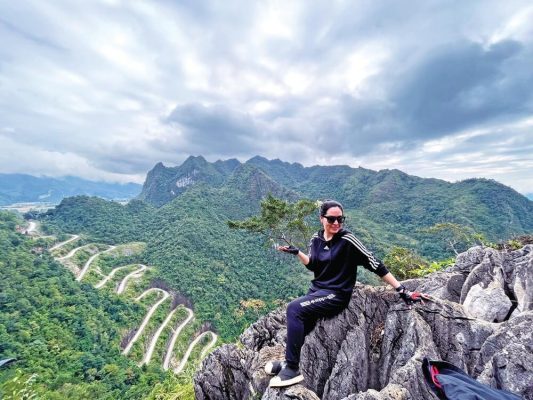
The journey starts from Cao Bang bus station to Xuan Truong commune, then asks about the destination of the 14-story sloped water bar Mrs. Nong Van Ngoan at Xuan Truong Heaven Gate. This is a great stop for you to enjoy the panoramic view of the 14-story slope of the Me Pia pass.
An absolute must-know when coming to Me Pia Pass
The road in the Northwest mountainous area is extremely dangerous
With rugged mountainous terrain, all roads in the Northwest provinces are very difficult to move, only for skilled drivers. So, if you decide to drive your own car or travel by motorbike to Me Pia pass, you need to make sure of your ability to cope with all situations. Not only that, even if you choose to travel by bus to Cao Bang, you will also rent a motorbike to reach the Me Pia Pass, which has a slope of 14 floors, so driving ability is essential.
Avoid times with a lot of fog
The weather in the Northwest region all year round is very prone to fog, although “hunting clouds” from the top of the pass is a great feeling, the road to Me Pia during this time is very dangerous and difficult to move.
In case you want to see the Me Pia pass in a time of a lot of fog, you should come in advance from yesterday afternoon, camp until tomorrow morning. This will limit the danger of moving, however, make sure you go in groups of 4 or more.
Go on a local tour
Fully-equipped hotels and motels in Cao Bang are usually located in the city center or in large districts and towns, from here moving to Me Pia Pass is quite far. Besides, a person who is not used to the rugged mountainous terrain is very difficult to drive. Therefore, the form of local tourism, that is, staying in people’s houses, with people acting as “guides” will be safer. The next advantage of this form is that you can explore all the beautiful places in Cao Bang outside of the Me Pia pass.
Other beautiful places in Cao Bang
In addition to the spectacular 14-story slope of the Me Pia pass, when coming to Cao Bang, you also have the opportunity to admire the following majestic natural scenery:
Ban Gioc Waterfall
Coming to Cao Bang without visiting Ban Gioc waterfall will definitely be a huge omission for every visitor. This waterfall seems to be a tourist symbol of Cao Bang province with the grandeur and magnificence that nature bestows, Ban Gioc waterfall is picturesque.
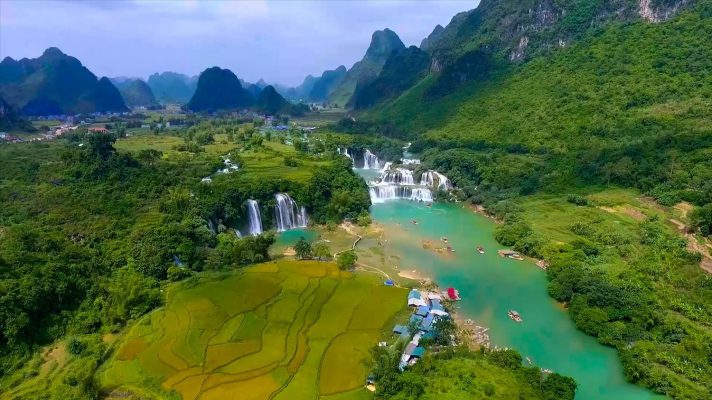
Ban Gioc Waterfall is located in Dam Thuy commune, Trung Khanh district, Cao Bang province, and is voted by many people as the most beautiful waterfall in Vietnam. This waterfall is very wide and more than 10m high, the fast-flowing water when flowing down creates a very beautiful white foam.
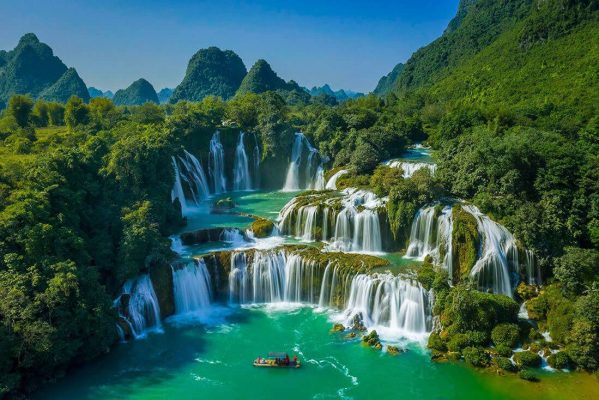
According to experience from those who often travel to the Northwest mountains, the time from August to October is the most suitable time to go to Cao Bang to visit Ban Gioc waterfall because of the cool climate, clear blue water, and fresh vegetation.
Nguom Ngao Cave
In Cao Bang, Nguom Ngao cave is also a famous place that must be seen once in a lifetime. Favored by nature, Nguom Ngao cave in Gun Village, Trung Khanh district, Cao Bang province has an extremely unique and eye-catching beauty.
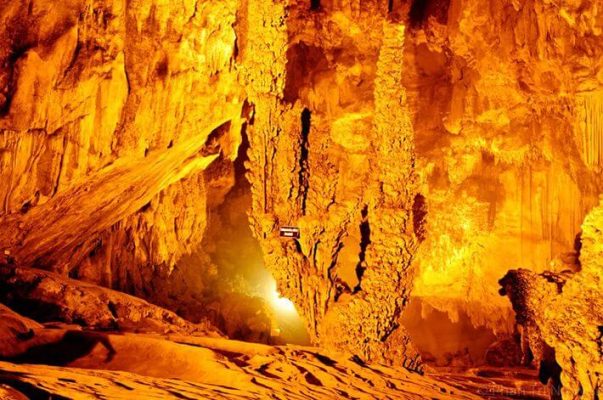
Inside the cave, the hundreds of years old stalactites, full of abstraction, will surely attract the eyes of all visitors. Resonating with the light, the water surface and stalactites in Nguom Ngao cave appear magical and mysterious patterns.
Traveling to Nguom Ngao cave in the wet season from May to September, you will admire the magic of the stalactites above, if you go in the dry season, you can enjoy walking on the sand inside the cave.
Ho Thang Hen
Coming to Cao Bang, Thang Hen Lake is also a famous sightseeing place with poetic and lyrical beauty. This is an eco-tourism area, so the atmosphere is very airy and fresh, suitable for those who like tranquility and want to relax completely.
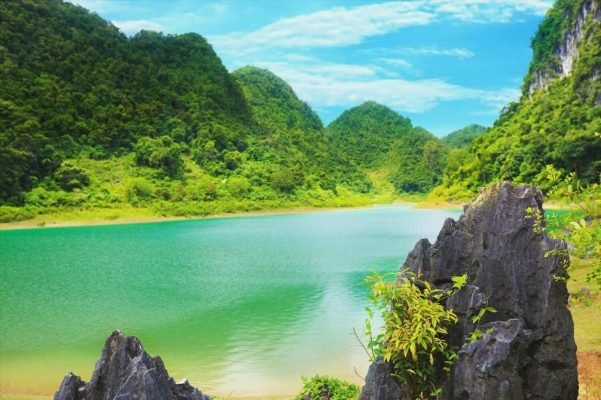
Thang Hen Lake is located at the boundary of Ngu Lao Commune, Hoa An District, and Quoc Toan Commune, Tra Linh District, Cao Bang Province.
Going to the end of Thang Hen Lake, you can admire the entire population of 36 large and small lakes separated from each other by underground caves.
The best time to visit Thang Hen cave is September and October because at this time the water has dried up, and below the lake begins to appear full of tree trunks that are magically wrapped together for a few hours and then the tide rises to cover everything. This whole process provides an enjoyable experience for every visitor.
Related Article: Top 5 most beautiful sights in Cao Bang
Vietnam Reviewer hopes that all of you will have a nice trip here. If you have any feedback or need help, please send an email to vietnamreviewer.contact@gmail.com!

